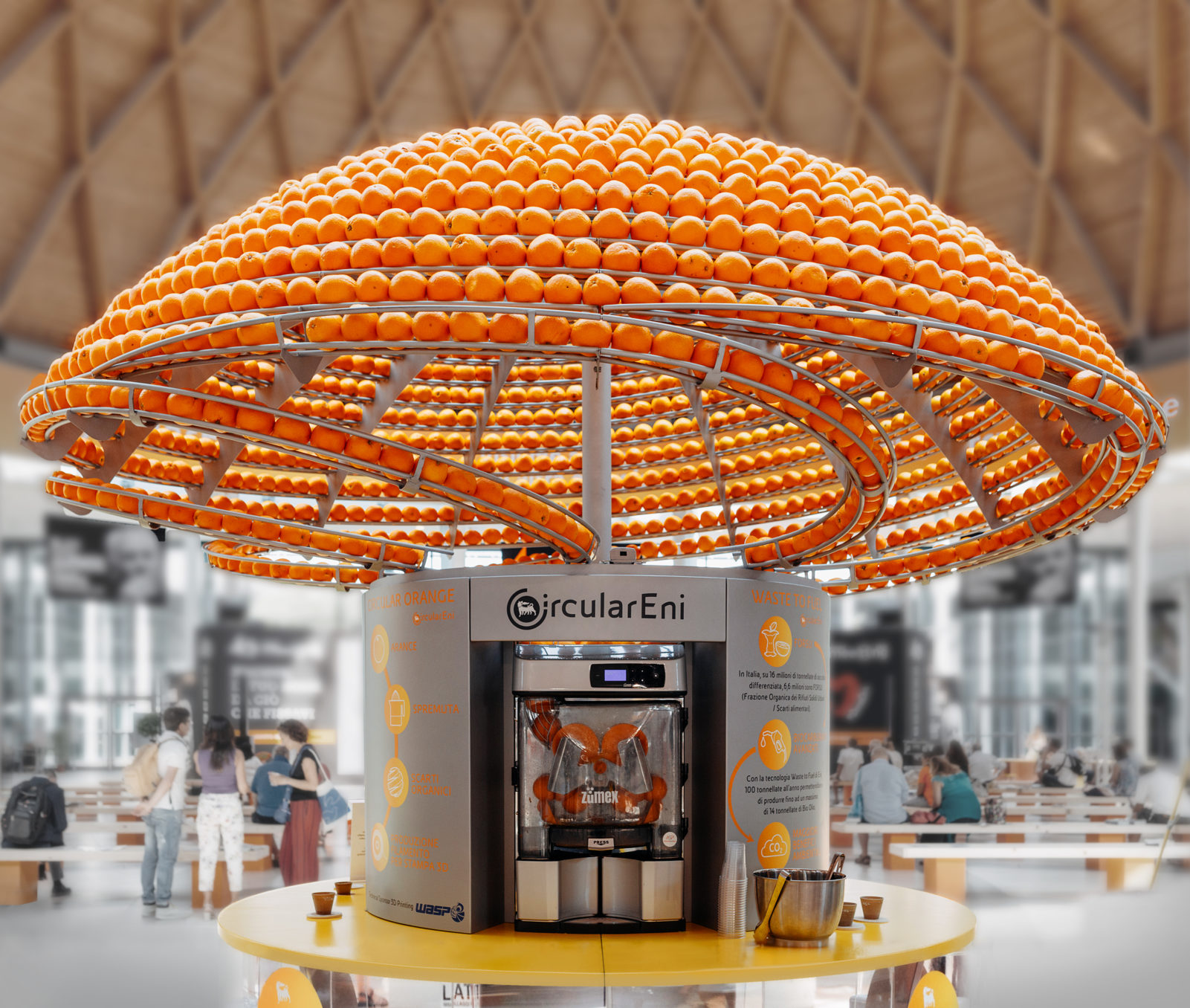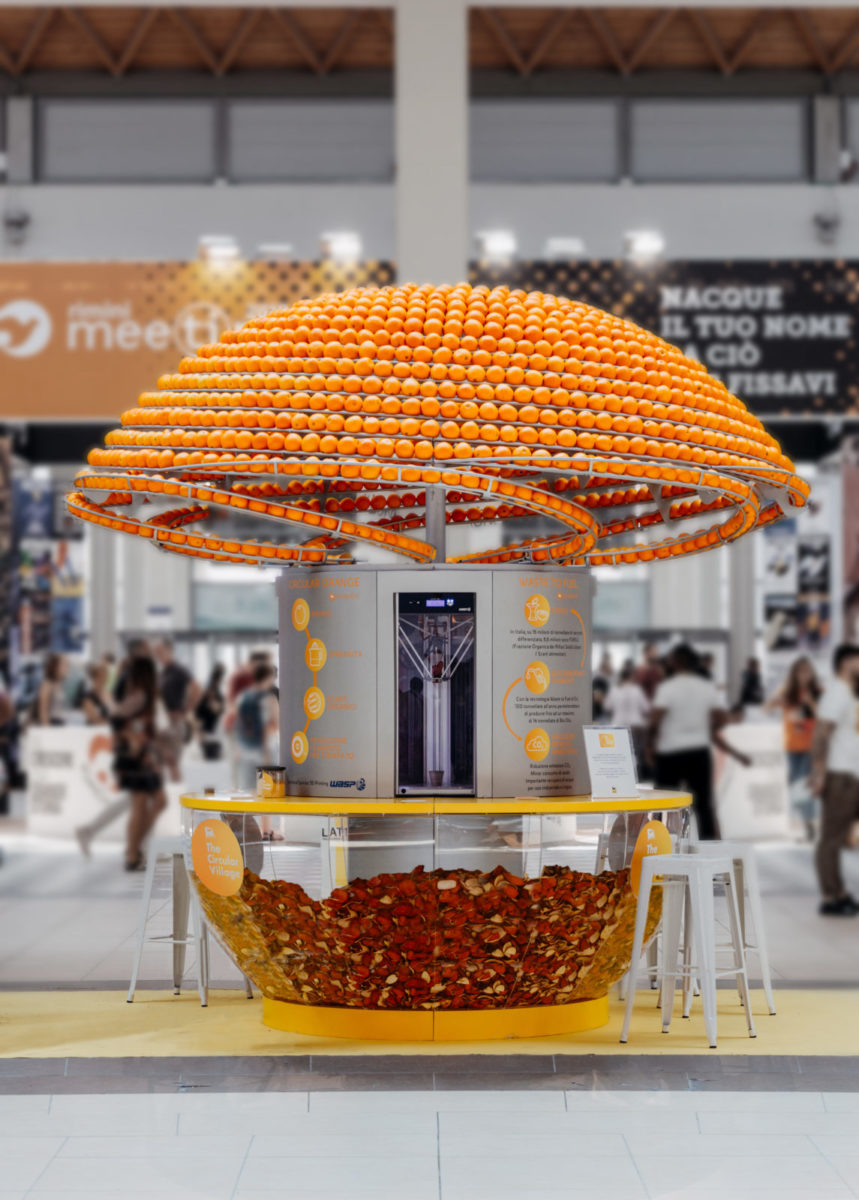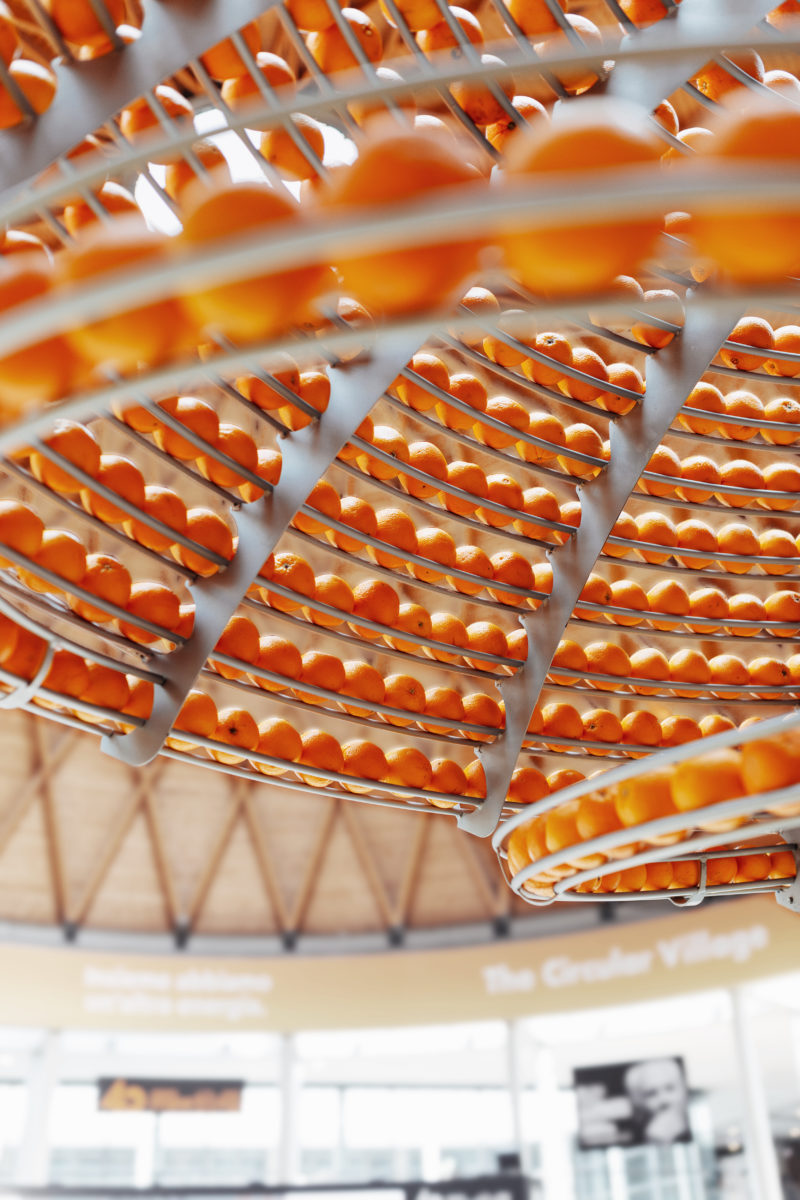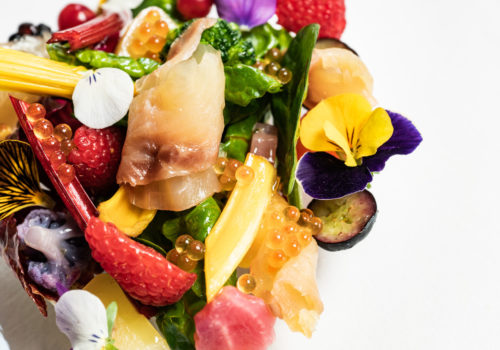Carlo Ratti Associati has created a prototype that uses the leftover parts of the fruit to make the glass for the juice
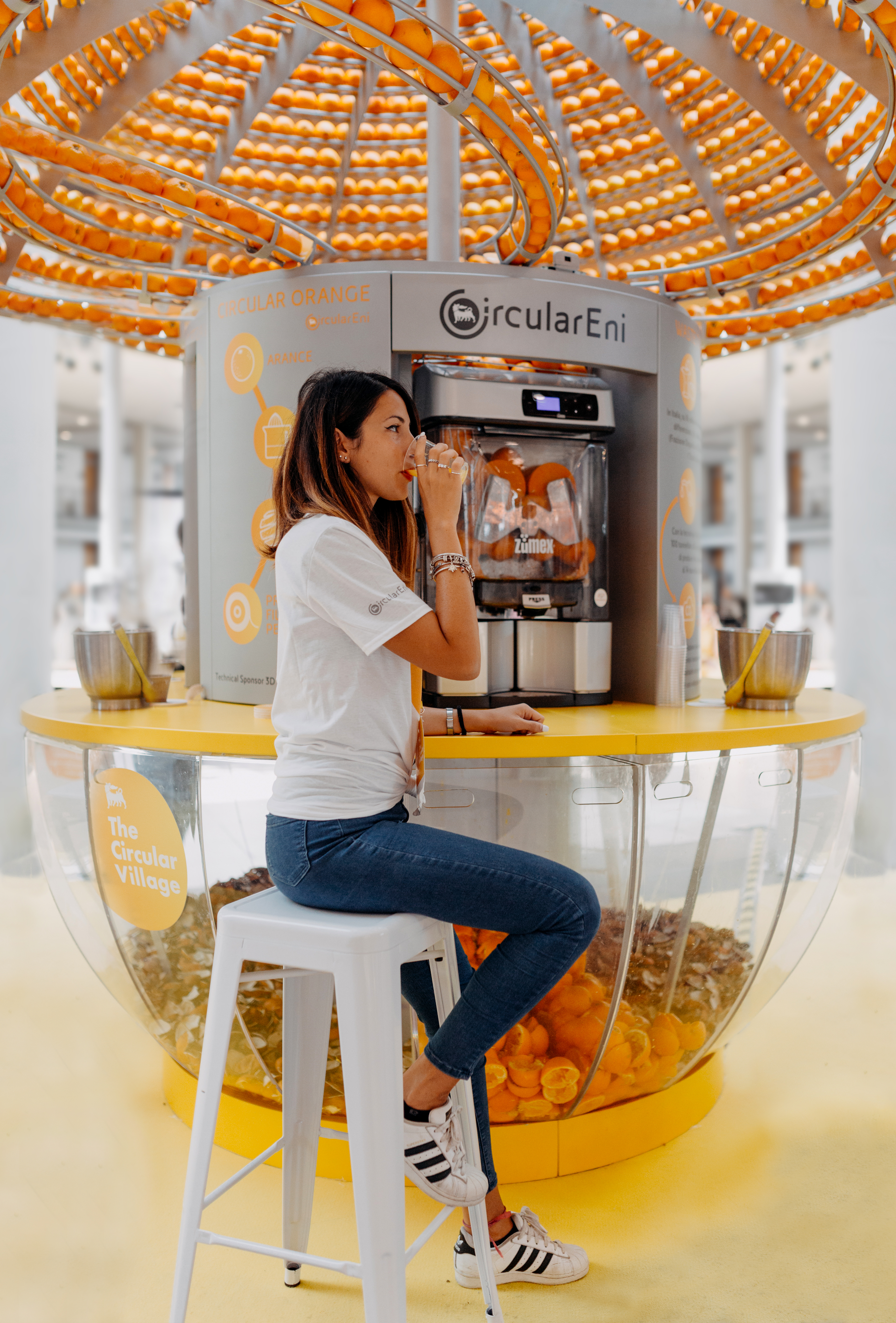
© Nicola Giorgetti
Order, watch, drink. Zero waste in “Feel the peel”, the prototype made by CRA-Carlo Ratti Associati for Eni that brings the circular economy into every-day life. The studio presented its Circular Juice Bar at the Meeting di Rimini and will soon be in Milan to demonstrate how it works during the Singularity University Summit (8-9 October) before returning to Rimini for Ecomondo (5-8 November). The first stop on a tour of Italian cities that will make it possible to test the potential for using what had until now been “waste”.
The automatized system uses the peel and pulp of oranges to create the glasses, significantly reducing organic waste.
This is a mono-product bar that produces no organic waste. When the machine is operated, the oranges are cut in half and juiced; the peel is sent into a container that, after drying out, will be mixed with polylactic acid to turn it into bio-plastic. The rest is done by a 3D printer integrated into the machine. The product is heated to become a filament and creates the glass into which the juice will be poured before the eyes of the future customer. The disposable cup can then be thrown away with no impact on the environment.
«Working with Eni we tried to tangibly demonstrate the concept of circularity, explains Carlo Ratti, founding partner of CRA and director of the Senseable City Lab at the Massachusetts Institute of Technology. The next step is to include new functions, for example printing fabrics».
The orange juicer, which is 3.10 meters tall, holds 1500 oranges in the glass bowl.
The development team at the firm included Saverio Panata, Alessandro Tassinari, Oliver Kazimir, Luca Bussolino, with Pasquale Milieri, Gary di Silvio, Gianluca Zimbardi on the graphic profiles.
The combination of circular economy and design is a leitmotif for the firm Carlo Ratti Associati. In recent months his Circular Garden at the Botanic Garden in Brera – also developed in collaboration with Eni – was featured at the Milano Design Week 2019. The fibrous root of mushrooms has been used as a construction material to create arches 4 metres high and, inspired by the symbolism of gated gardens, to build modular rooms that can be dismantled at the end of the fair.
Circular was also the name of the restaurant that in 2018 was hosted at the Maker Faire in Rome: an example of how proper disposal can make reuse possible. Organic waste becomes a second-generation biofuel, the polystyrene is transformed into foam for the thermal insulation sector and frying oils come back to life as biodiesel. «A great dining experience – explains Carlo Ratti – where we can sit down to eat together, and at the same time discover the possibility of repurposing used materials, such as plates and cutlery, and food waste, starting with simple gestures such as recycling fruit peel».
© ALL RIGHTS RESERVED
translation by Olga Barmine


